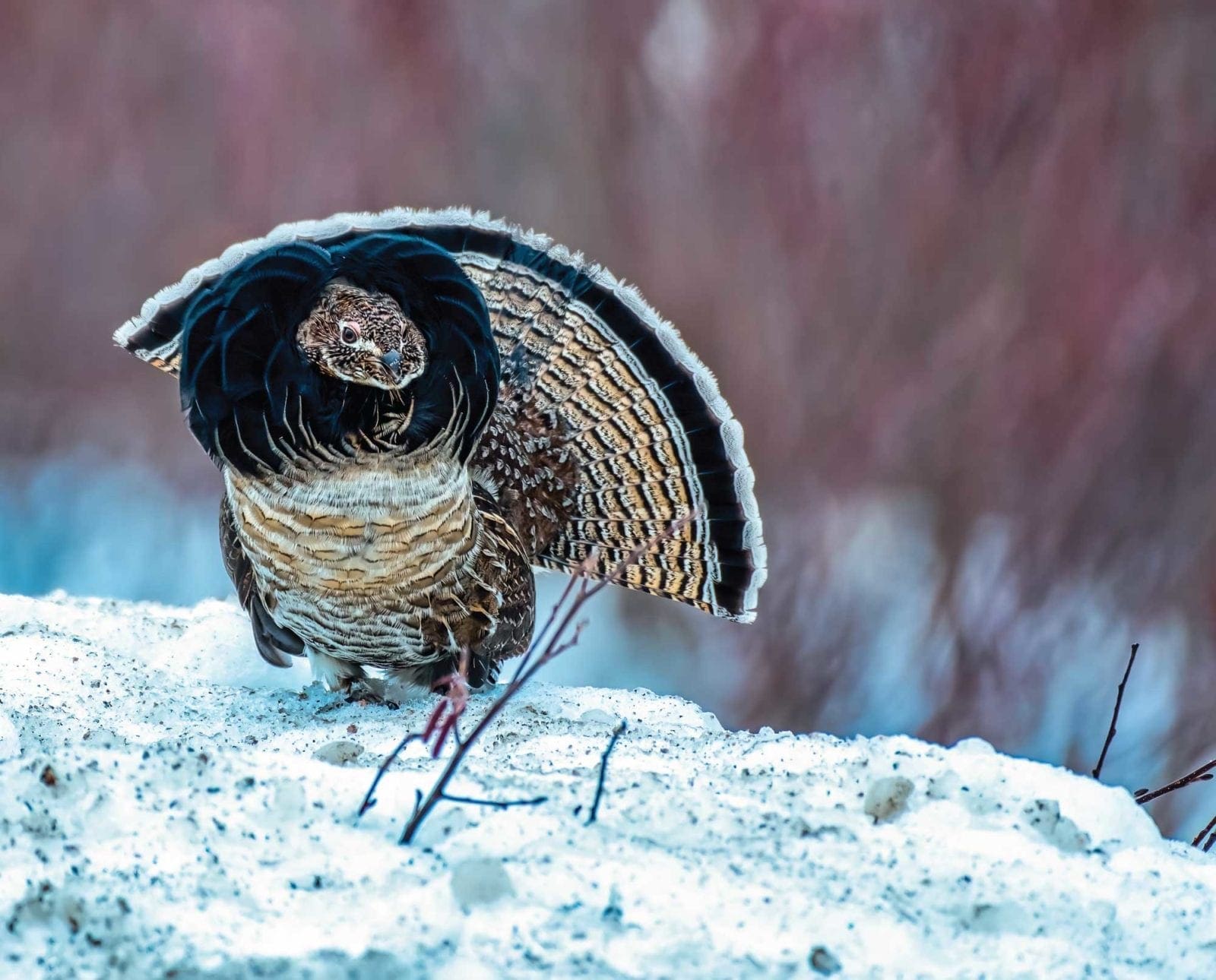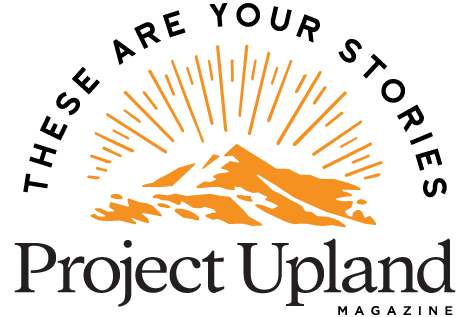Home » Grouse Species » Ruffed Grouse Hunting » Hunting Ruffed Grouse in Alaska
Hunting Ruffed Grouse in Alaska

Scott Johnson is a first generation hunter with a lifelong…
Learning to adapt to Alaskan ruffed grouse habitat and hunting
Autumn has long passed in Alaska. Like many upland hunters, I live for the golden leaves and crisp air of fall and mourn its passing as the snow and cold usher in winter’s edict that yet another season has passed.
Depending on where you live, fall could spark a plethora of potential upland pursuits, but, for me, the crisp fall air means it’s grouse season above all things.
I started my upland hunting life chasing ruffed grouse through the woods of northern Minnesota, and no matter how many miles I’ve traveled, I’m a grouse hunter to my core. The presence of ruffed grouse on the landscape was a major reason I decided to live in Alaska, as its vast and abundant resources would allow me to pursue them again throughout the entirety of the season. The wildness that makes Alaska great can also make it a great challenge. This season was a lesson in getting back to the basic elements of what it takes to find ruffed grouse.
There’s no secret to what makes up good ruffed grouse habitat: young deciduous trees, a water source, food, and if there’s a two-track full of gravel that cuts through it, even better. I learned to hunt ruffed grouse in a landscape that is highly manipulated by active forestry. Its vast network of forest roads and ATV trails are constantly turning over the landscape and making new homes for the King of the Uplands.
When I set out this season to find them in Alaska, I quickly came to learn that none of those conveniences were at hand here in the last frontier. Although there is some active forestry in the state, it varies greatly from region to region. The forest fires that re-write the landscape create fantastic habitat; however, Mother Nature rarely places them in a readily accessible area. I spent a lot of time digging through all the digital tools we have at our disposal these days but the answers they provided were limited. As I scratched around for answers, I had to remind myself to keep looking for those basic elements that make up good grouse cover. I would find the answer through a little luck and some old-fashioned boot-leather scouting.
That search for good habitat took me back to the spot of our first Alaskan grouse success. It was as much an investigative crutch as it was knowledge. I had found my way into a spot last season that had fantastic habitat, and although I knew it was great, at the time I didn’t really know why. On our return visit we flushed a few spruce grouse on the way in, and seven ruffed grouse in just an hour. It was a large flat corner of a river filled with willows, balsam poplars, and large cottonwoods. It had everything the grouse wanted.
As I sat with Watson, my Labrador retriever, admiring the pair of ruffs we had taken on the bank of the river I realized what we had actually found. No matter how much we learn it sometimes takes a boots-on-the-ground epiphany to tie it all together. We had just spent the morning hunting a dried up flood plain. In the same way that fire shapes the landscape of the interior, this river had once flooded and created the perfect canvas for a ruffed grouse to call home.
We would test this theory a few times before the season was out, and it would hold true to a fault. Every waterway I could get to had its chance. Each river gave us a beautifully unique backdrop and challenge, and the birds that called them all home were as wild and elusive as the river itself. Watson and I would work methodically along every willow-filled and braided corner, weaving in and out along their edges with the poplars and conifers. The precise spot a bird would hold changed from cover to cover, but they were remarkably consistent in their proximity to the river itself. If at any point you were out of earshot of the flowing water, you were too far away.
The linear nature of these hunts was extra challenging as there was no way to effectively work around the birds to corner them in any way. There was one way in for us, and a lot of ways out for them. The first grouse we found along a small river one morning rocketed to the other side before I could even mount my gun, mocking us from there as if it knew we couldn’t safely get across.
Bag counts are never the true measure of a season, and the seven ruffed grouse we took this year is the lowest number for Watson and me since his first season. It feels like more, though. We spent an entire fall re-learning all the things we loved about ruffed grouse hunting and remembering some nuances that I had probably overlooked through experience in previous years. Every bird we found and every bird we bagged we had to work for from scratch.
The raw and wild nature of Alaska is an incredible thing. I have no doubt it will be constantly shaping the landscape during our time here, making us search for new covers and relearn their secrets every season. Of all the upland birds, ruffed grouse are our first and greatest love, and the wildness of Alaska is going to make us work for them. I wouldn’t have it any other way.
Scott Johnson is a first generation hunter with a lifelong passion for the outdoors. Originally a fisherman and grouse hunter from Norther Minnesota, he spends his seasons traveling across the country in search of upland birds and waterfowl with his beloved labrador Watson. He hunts and lives out of a converted van that he purpose built for his pursuits, and can be found anywhere from the Midwest to the deserts of Arizona, and as far north as Alaska.




The years I spent hunting Alaska were all in the Mat Sue valley. I was able to tangle with a few Ruffies in my time living up there. The old burn in Big Lake turned out to be a good spot. It takes lots of miles to get a full vest of Ruffes Grouse in Alaska, but completely worth it. Most of the space in ones vest can be taken up by the Spruce Grouse, they are everywhere. By far one of the best States for Grouse hunting in my opinion, and I am also from Northern Minnesota!